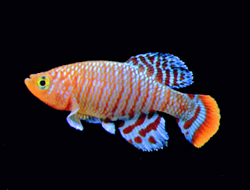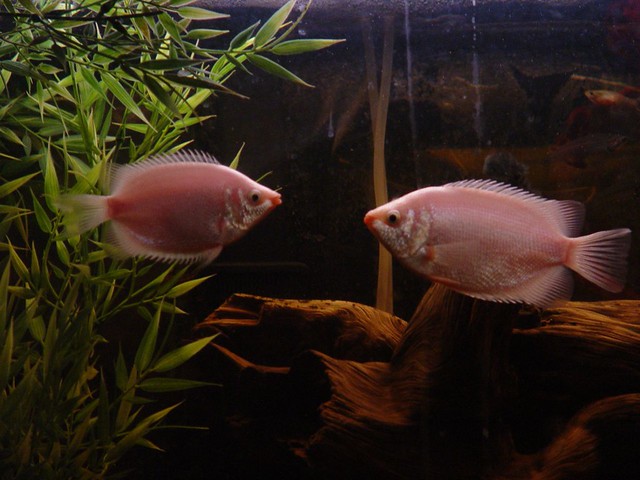The Rosy Barb Puntius conchonius (previously Barbus conchonius ) is one of the most beautiful of the freshwater fish. They have a silvery or coppery pink color with a green cast along the back, and the males will have more pink on their underbellies. They are hardy, undemanding, and fun to watch because they are constantly on the move. These qualities make them one of the most desirable starter fish.
 |
An image of Puntius conchonius (Rosy Barb, Prachtbarbe, Praktbarb) (Photo: Wikipedia)
|
The color of these fish is always attractive but it most impressive when they are spawning. The males silvery color intensifies to a deep rosy red or a purplish red, and the fins get pink and black. Though usually referred to as a Rosy Barb, another common name they are known by is the Red Barb. They have also been developed in several ornamental varieties. Some of these include the Neon Rosy Barb, Long Fin Rosy Barb, Red Glass Rosy Barb, and Gold Neon Rosy Barb.
These barbs are a delightful choice for a beginning fish keeper but will make a dynamic display in any aquarists tank. They are peaceful and will do well in a community aquarium, with only an occasional nip on a tankmates fins. They do prefer cooler water than much other tropical fish, needing temperatures between 64-72° F (18-22° C). Be sure to select tankmates that will also thrive in a cooler tank.
Depending on the region they are from these fish vary some in appearance and size. They are one of the larger barb species so do need at least a 20-gallon tank. In the wild, they can reach lengths of up to 6 inches (15 cm). In the aquarium, however, it is more common for them to only reach about 4 inches (10 cm). Not only are they very active, they are great jumpers, so the aquarium needs to be covered.
When kept in a school, the males display an interesting behavior. They will continually swim around each other with their fins spread out, showing off their best colors. These fish are very prolific breeders but they will need a breeding tank with shallow water. They will happily spawn in water that is just a couple of inches deep.
The Rosy Barb has a torpedo shaped body and its tail is forked. It has only one dorsal fin. Lacking an adipose fin, a second dorsal fin to the rear of the first is a characteristic of all the Cyprinid fishes. This is a good sized fish reaching a length of up to 6 inches (15 cm) in the wild, though they generally only reach about 4 inches (10 cm) in the aquarium. They are mature at 2.5 inches (6 cm) and have an average lifespan of about 5 years.
The general coloration is silvery or coppery pink body with somewhat of a greenish cast along the back. Males are a more reddish color, especially on the underbelly and sides. There is a black spot just in front of caudal peduncle, and there may be some black along the top margins of the anal and dorsal fins. These fish will vary some in appearance and size, depending on the region they are from.
Size of fish – inches: 5.9 inches (15.01 cm) – In the wild, these fish can reach up to 6 inches (15 cm), but in captivity, they generally only get about 4 inches (10 cm).
Copyright © [Animal-World] 1998-2012. All rights reserved.
|






